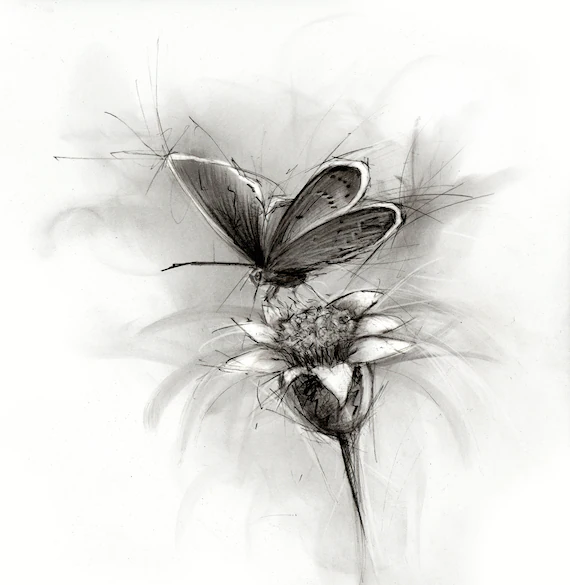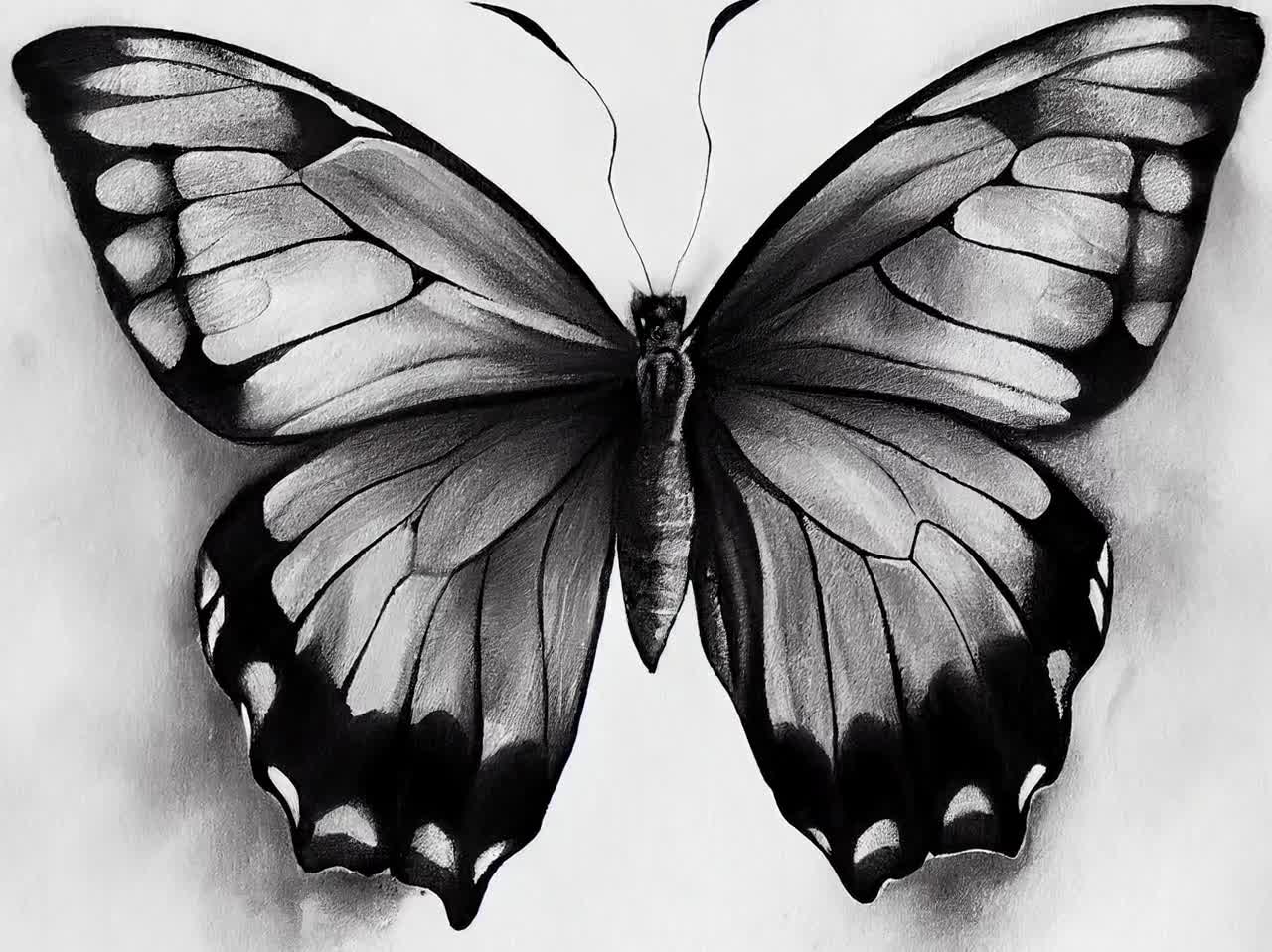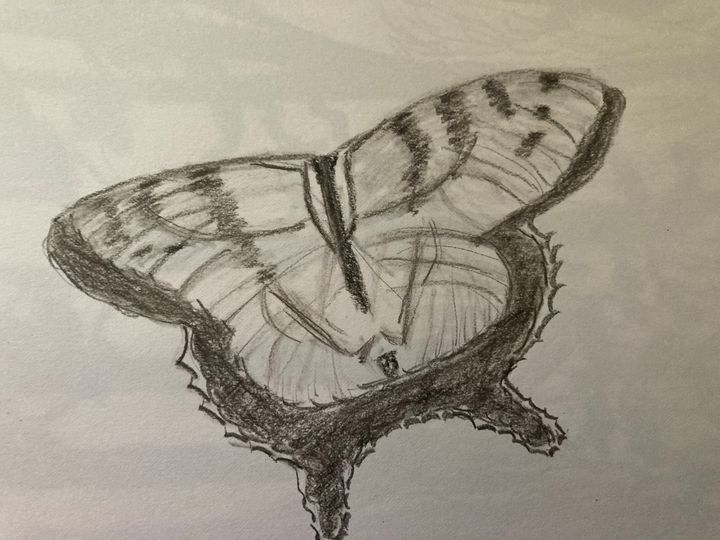The charcoal medium offers a richness and depth that can bring the delicate details and sublime beauty of butterflies to life like no other. Mastering this medium to depict butterflies not only hones technical skills but also enhances artistic expression, allowing the artist to capture the ephemeral grace of these winged creatures. Below, we explore comprehensive approaches involving essential techniques, material selection, emphasis on the play of light and shadow, refining details, and tips for presentation. Each section guides aspiring artists on their journey to perfecting the art of charcoal butterfly drawings.
Getting Started: Essential Supplies and Setup
Choosing Your Tools
To embark on this artistic endeavor, selecting the correct materials is crucial. High-quality charcoal sticks, pencils of various hardness, a kneaded eraser, a fine-toothed but sturdy drawing paper, and blending tools should form the core of your art supplies. Each of these tools plays a vital role in creating different textures and contrasts necessary for capturing the delicate details of a butterfly.
Preparing Your Workspace
A well-organized and comfortable workspace is conducive to artistic creation. Ensure good lighting, preferably natural light, to accurately observe and recreate the nuances of your subject. A clean, flat surface with your tools within easy reach sets the stage for an uninterrupted creative flow. Also, consider using a fixative spray in a well-ventilated area or outdoors to preserve your drawings without smudging.

Sketching and Shading Techniques
Laying Down the Foundation
The first step involves lightly sketching the butterfly with a hard charcoal pencil, focusing on getting the proportions and basic shapes correct. Avoid pressing too hard to facilitate easy correction in later stages. This stage often determines the overall composition and form, acting as a crucial guide for detailed work ahead.
Building Depth and Contrast
With the basic outline in place, begin shading the darker areas lightly, gradually building up to the desired intensity. Use soft charcoal sticks for deep blacks and shadows to create contrast. Remember, the magic of charcoal drawing lies in its ability to produce a striking range of tones, from deep blacks to lighter greys, crucial for depicting the nuanced wings of butterflies.

Emphasizing Contrast and Texture
Mastering Light and Shadow
Contrast is vital in creating a sense of volume and realism. Pay close attention to the light source and how it interacts with the butterfly, especially on the intricate vein patterns and textures on the wings. Use a blending stump for smooth transitions between the light and dark areas, and don’t be afraid to use your kneaded eraser to lift charcoal off for highlights.
Adding Details and Textures
Using a fine-tipped charcoal pencil, carefully add the details that will bring your butterfly to life. This includes the delicate patterns on the wings, the fine hairs on the body, and the subtle variations in tone across different areas. Patience and a steady hand are key, as details can make or break your drawing’s realism.

Refining Your Drawing
Reviewing and Correcting
Step back periodically to review your work from a distance. This helps in assessing the overall balance and proportion, making it easier to spot areas that need refinement. Use your eraser to make corrections or lift charcoal for softer tones, and reapply darker shades where necessary to maintain depth and volume.
Final Touches
As you conclude, focus on the finest details that will add the last touch of realism and depth to your drawing. Consider the background as well; a subtly shaded background can make your butterfly pop out of the page, creating a stunning visual impact. Once satisfied, apply a layer of fixative spray to protect your drawing from smudging and dust.

Presentation and Preservation
Matting and Framing
A well-presented charcoal drawing can captivate and enchant viewers. Choose a mat and frame that complement your work without overpowering it. The right presentation underscores the beauty of your creation and protects it against external elements, ensuring it stands the test of time.
Care and Maintenance
Store your charcoal drawings in a clean, dry place, away from direct sunlight to prevent fading. Handle your artworks with care, ideally touching them as little as possible to keep them pristine. Regularly check framed pieces to ensure they remain dust-free and vibrant for years to come.

Enhancing Techniques Through Practice
Experimenting with Charcoal Varieties
Each charcoal form, be it pencil, vine, or compressed, offers unique possibilities for texture and depth. Experiment by creating several practice sketches, focusing on how different types of charcoal respond to pressure and blending. Through trial and error, discover how to layer shades seamlessly and which tools best bring out the finer details in the butterfly’s wings and body, such as the delicate fluff or antennae. Mastery comes from understanding the strengths of each charcoal type and how to combine them effectively.
Developing Your Observational Eye
A critical aspect of perfecting your butterfly drawings is the ability to truly see your subject. Spend time observing real butterflies or studying photographs. Note the way light plays on the wings, the symmetry of the patterns, and the subtle gradations of color that need to be translated into grayscale. Drawing from life, when possible, can significantly enhance your ability to capture the true essence and impermanence of a butterfly, a skill that translates into more dynamic and convincing artwork.
Committing to Regular Practice
As with any art form, regular practice is the key to improvement. Set aside dedicated time for drawing every day, or as often as your schedule allows. Keep a sketchbook specifically for butterfly studies, and fill it with gestures, detailed studies, and various compositional experiments. Over time, your muscle memory and confidence in handling charcoal will improve, and the once-daunting task of capturing such fragile subjects will become a source of joy and artistry.
Broadening Artistic Vision Beyond Butterflies
Exploring Varied Subjects
Once comfortable with butterflies, expand your portfolio by applying the skills you’ve honed to a broader range of subjects. The principles of light, shadow, and texture are universal in art; thus, practicing on different subjects will reinforce your abilities. From flowers to birds, each new subject can offer its challenges and rewards, making you a more versatile and capable artist.
Integrating Color and Mixed Media
While this guide focuses on charcoal, do not limit yourself to monochrome pieces indefinitely. Exploring the use of color, perhaps through pastels or colored pencils, can add a new dimension to your work. Consider using charcoal to lay the groundwork for structure and contrast, then bringing in color to highlight and bring warmth. Mixed media can open a whole new world for artists willing to experiment and push the boundaries of their comfort zones.
Sharing and Receiving Feedback
Joining artist communities, either locally or online, can provide valuable feedback and inspiration. Share your work with peers, participate in exhibitions, or even teach what you have learned to others. Engaging with feedback can offer fresh perspectives and critique that help refine your technique further. Celebrate your progress and stay open to learning throughout your artistic journey.
By following these steps and dedicating time to practice, artists can perfect the art of charcoal butterfly drawings. From the initial setup and sketching to refining details and presenting the final piece, each stage brings its rewards, enhancing both skill and appreciation for the delicate beauty of butterflies. Achieving mastery in this art form is a journey of continuous learning and passion, resulting in creations that are not only visually striking but also deeply personal.